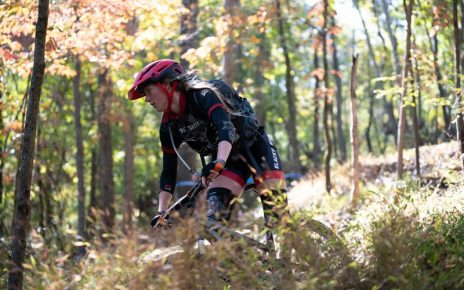
STEAMBOAT SPRINGS — It’s mountain biking season. To help you prepare, we offer the following five tips from local rider Tim Price, a mountain bike instructor and guide at the Steamboat Bike Park.
1. Level pedals

Tips
Don’t stork on your mountain bike. Keep your pedals level when cornering or descending. Dropping one foot down may feel easier, but it puts your balance on one leg, locks your knee and puts your pedal closer to hitting something. No storking!
2. One-finger breaking
Modern mountain bikes have powerful hydraulic disc brakes. One finger is all you need to slow yourself down. Using two fingers makes it harder to control the power and weakens your grip on the handlebar. When braking, make sure your index finger is out toward the end of the lever for maximum control — you may need to slide your brake levers in to make this possible.
3. Look where you want to go
Keeping your eyes up helps your balance and lets you prepare for obstacles sooner. Also look forward while cornering; it will help you know whether you need to slow down, or let it roll.
4. Drop your seat
Nearly all modern, high-end mountain bikes come with dropper seat posts that you can raise and lower on the fly — for good reason. Speed, agility, comfort and safety all go up when your seat goes down. If you have one, use it all the time. If you don’t, before descending lower your seat to a more comfortable height while standing.
5. Don’t be stubborn
Don’t fall back on bad habits or buck trends for the sake of pride. I learn things every ride, and you can too. Get some coaching and take a private lesson from a certified instructor. It’ll take less time than it does to climb Emerald, and you’ll have more confidence, ride safer, and get more out of every ride.
BIKE MAINTENANCE TIPS
• Check tire pressure and tire surface for cuts and embedded debris.
• Keep chain clean and lubricated. Lubricate with dry lube; or every other week or 400 miles with wet chain lube.
• Check chain for side-to-side play and replace if necessary.
• Wash bike regularly — once a week or every 200 miles — in hot water and dish soap, oil drive train and wipe off excess oil.
• Inspect shifting and braking cables and housing twice a year; replace if necessary.
• Be prepared for inclement weather; carry extra clothing and food.
• Carry proper repair gear, including pump, spare tube, patch kit and chain tool.
• Check cleats for wear and tighten bolts; replace if worn.
This article was published first in the 2019 Bike Guide.



